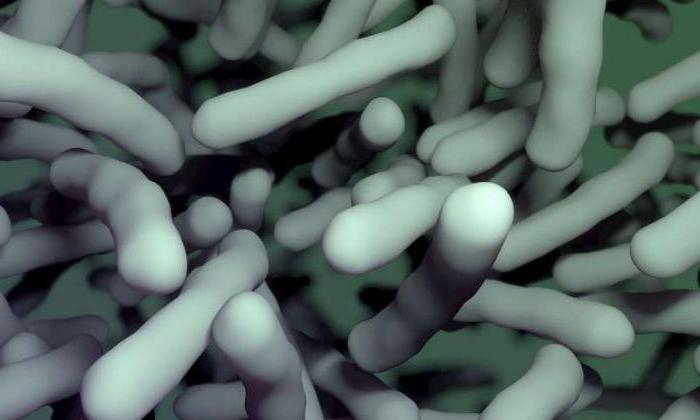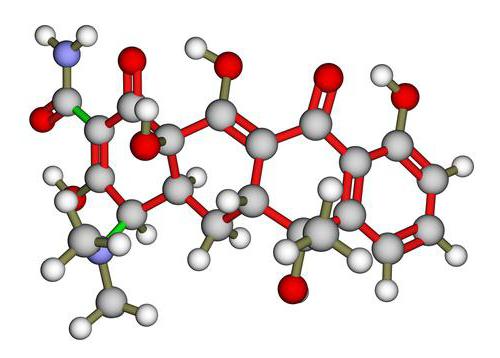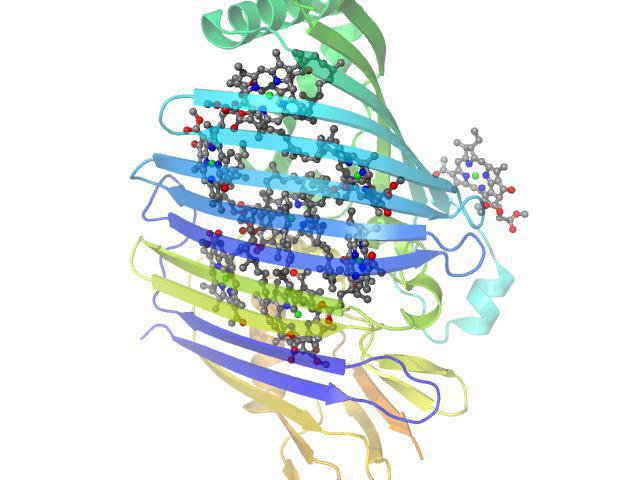We can say that the discovery of penicillin at the beginning of the last century was a revolutionary event. During World War II, the first antibiotic saved millions of wounded soldiers from sepsis. Penicillin has become effective and at the same time a cheap drug for many serious infections with serious fractures and purulent wounds. Over time, other classes of antibiotics were synthesized.
general characteristics
Today, there are already a large number of drugs related to the vast world of antibiotics - substances of natural or semi-synthetic origin, which have the ability to destroy certain groups of pathogens or inhibit their growth or reproduction. The mechanisms and spectra of antibiotic action can be different. Over time, new types and modifications of antibiotics appear. Such their diversity requires systematization. In our time, the classification of antibiotics by the mechanism and spectrum of action, as well as by chemical structure, has been adopted. According to the mechanism of action they are divided into:
- bacteriostatic, inhibiting the growth or reproduction of pathogenic microorganisms;
- bactericidal, which contribute to the destruction of bacteria.
The main mechanisms of action of antibiotics:
- violation of the bacterial cell wall;
- suppression of protein synthesis in a microbial cell;
- violation of the permeability of the cytoplasmic membrane;
- inhibition of RNA synthesis.
Beta Lactams - Penicillins
According to the chemical structure of these compounds are divided as follows.
Beta-lactam antibiotics. The mechanism of action of lactam antibiotics is determined by the ability of this functional group to bind enzymes involved in the synthesis of peptidoglycan, the basis of the outer membrane of microorganism cells. Thus, the formation of its cell wall is suppressed, which helps to stop the growth or reproduction of bacteria. Beta-lactams have low toxicity and at the same time a good bactericidal effect. They represent the largest group and are divided into subgroups having a similar chemical structure.
Penicillins are a group of substances secreted from a particular colony of mold and acting bactericidal. The mechanism of action of penicillin antibiotics is due to the fact that, destroying the cell wall of microorganisms, they destroy them. Penicillins are of natural and semi-synthetic origin and are compounds of a wide spectrum of action - they can be used in the treatment of many diseases caused by streptococci and staphylococci. In addition, they have the property of selectivity, acting only on microorganisms, without affecting the macroorganism. Penicillins have their drawbacks, which include the emergence of bacterial resistance to it. The most common natural ones are benzylpenicillin, phenoxymethylpenicillin, which are used to combat meningococcal and streptococcal infections due to their low toxicity and low cost. However, with long-term use, the body may experience immunity to the drug, which will lead to a decrease in its effectiveness. Semisynthetic penicillins are usually obtained from natural ones by chemical modification to give them the desired properties - amoxicillin, ampicillin. These drugs are more active against bacteria resistant to biopenicillins.

Other beta-lactams
Cephalosporins are obtained from fungi of the same name, and their structure is similar to the structure of penicillins, which explains the same negative reactions. Cephalosporins are four generations. First-generation drugs are used more often in the treatment of mild infections caused by staphylococci or streptococci. The second and third generation of cephalosporins are more active against gram-negative bacteria, and the fourth-generation substances are the most powerful drugs used to treat severe infections.
Carbapenems act effectively on gram-positive, gram-negative and anaerobic bacteria. Their positive feature is the lack of resistance of bacteria to the drug, even after prolonged use.
Monobactams also belong to beta-lactams and have a similar mechanism of antibiotic action, consisting in the effect on the cell walls of bacteria. They are used to treat a wide variety of infections.
Macrolides
This is the second group. Macrolides are natural antibiotics that have a complex cyclic structure. They are a polynomial lactone ring with attached carbohydrate residues. The properties of the drug depend on the number of carbon atoms in the ring. There are 14-, 15- and 16-membered compounds. The spectrum of their action on microbes is quite wide. The mechanism of action of antibiotics on a microbial cell consists in their interaction with ribosomes and thereby disrupting protein synthesis in the microorganism cell by inhibiting the reactions of the addition of new monomers to the peptide chain. Accumulating in the cells of the immune system, macrolides also carry out intracellular destruction of microbes.
Macrolides are the safest and less toxic among known antibiotics and are effective against not only gram-positive, but also gram-negative bacteria. When using them, no undesirable side reactions are observed. These antibiotics are characterized by a bacteriostatic effect, but at high concentrations they can have a bactericidal effect on pneumococci and some other microorganisms. By the method of producing macrolides are divided into natural and semi-synthetic.
The first drug from the class of natural macrolides was erythromycin, obtained in the middle of the last century and successfully used against gram-positive bacteria resistant to penicillins. A new generation of drugs of this group appeared in the 70s of the 20th century and is still actively used.
Semi-synthetic antibiotics - azolides and ketolides also belong to macrolides. In the azolide molecule, a nitrogen atom is included in the lactone ring between the ninth and tenth carbon atoms. The representative of azolides is azithromycin with a wide spectrum of action and activity in the direction of gram-positive and gram-negative bacteria, some anaerobes. It is much more stable in an acidic environment, compared with erythromycin, and can accumulate in it. Azithromycin is used for a variety of diseases of the respiratory tract, genitourinary system, intestines, skin and others.
Ketolides are prepared by attaching to the third atom of the lactone ring of the keto group. They are distinguished by lesser habituation of bacteria when compared with macrolides.
Tetracyclines
Tetracyclines belong to the class of polyketides. These are broad-spectrum antibiotics with a bacteriostatic effect. The first representative of them - chlortetracycline, was isolated in the middle of the last century from one of the cultures of actinomycetes, they are also called radiant mushrooms. A few years later, oxytetracycline was obtained from a colony of the same mushrooms. The third representative of this group is tetracycline, which was first created by chemical modification of its chlorine derivative, and after a year it was also isolated from actinomycetes. All other drugs of the tetracycline group are semisynthetic derivatives of these compounds.
All these substances are similar in chemical structure and properties, in activity against many forms of gram-positive and gram-negative bacteria, some viruses and protozoa. They are resistant to addictive microorganisms. The mechanism of action of antibiotics on a bacterial cell is to suppress protein biosynthesis in it. When molecules of the drug act on gram-negative bacteria, they pass into the cell by simple diffusion. The mechanism of penetration of antibiotic particles into gram-positive bacteria is still not well understood, however, there is an assumption that tetracycline molecules interact with ions of certain metals that are in bacterial cells, with the formation of complex compounds. In this case, the chain breaks during the formation of the protein necessary for the bacterial cell. Experiments have shown that bacteriostatic concentrations of chlortetracycline are sufficient to inhibit protein synthesis, however, large concentrations of the drug are required to inhibit the synthesis of nucleic acids.

Tetracyclines are used in the fight against kidney diseases, various infections of the skin, respiratory tract and many other diseases. If necessary, they replace penicillin, but in recent years the use of tetracyclines has significantly decreased, due to the emergence of resistance of microorganisms to this group of antibiotics. The use of this antibiotic as an additive to animal feed played a negative role, which led to a decrease in the medicinal properties of the drug due to the emergence of resistance to it. To overcome it, combinations with different drugs are prescribed that have a different mechanism of the antimicrobial effect of antibiotics. For example, the therapeutic effect is enhanced with the simultaneous use of tetracycline and streptomycin.
Aminoglycosides
Aminoglycosides are natural and semisynthetic antibiotics with an extremely wide spectrum of action, containing amino acid residues in the molecule. The first aminoglycoside was streptomycin, isolated from a colony of radiant fungi in the middle of the last century and actively used in the treatment of many infections. Being bactericidal, antibiotics of the mentioned group are effective even with greatly reduced immunity. The mechanism of action of antibiotics on a microbial cell is the formation of strong covalent bonds with the ribosome proteins of the microorganism and the destruction of protein synthesis reactions in the bacterial cell. The mechanism of the bactericidal effect of aminoglycosides has not been fully studied, in contrast to the bacteriostatic effect of tetracyclines and macrolides, which also disrupt protein synthesis in bacterial cells. However, it is known that aminoglycosides are active only under aerobic conditions; therefore, they exhibit low efficiency in tissues with weak blood supply.
After the appearance of the first antibiotics - penicillin and streptomycin, they began to be used so widely in the treatment of any diseases that very soon the problem of microorganisms getting used to these drugs arose. Currently, streptomycin is used mainly in combination with other drugs of the latest generation for the treatment of tuberculosis or such rare infections as the plague today. In other cases, kanamycin is prescribed, which is also an antibiotic of the first generation of aminoglycosides. However, due to the high toxicity of kanamycin, gentamicin, the second-generation drug, is now preferred, and the drug of the third generation of aminoglycosides is amikacin - it is rarely used to prevent microorganisms from getting used to it.
Chloramphenicol
Levomycetin, or chloramphenicol, is a natural antibiotic with a wide spectrum of activity, active regarding a significant number of gram-positive and gram-negative microorganisms, many large viruses. In terms of chemical structure, it is a derivative of nitrophenylalkylamines, first obtained from an actinomycete culture in the mid-20th century, and two years later also synthesized chemically.
Chloramphenicol has a bacteriostatic effect on microorganisms. The mechanism of action of antibiotics on a bacterial cell is to suppress the activity of catalysts for the formation of peptide bonds in ribosomes during protein synthesis. Resistance to chloramphenicol in bacteria develops very slowly. The drug is used for diseases of typhoid fever or dysentery.
Glycopeptides and lipopeptides
Glycopeptides are cyclic peptide compounds that are natural or semi-synthetic antibiotics with a narrow spectrum of action on certain strains of microorganisms. They have a bactericidal effect on gram-positive bacteria, and can also replace penicillin in the event of resistance to it. The mechanism of action of antibiotics on microorganisms can be explained by the formation of bonds with the amino acids of the cell wall peptidoglycan and, thus, the suppression of their synthesis.
The first glycopeptide, vancomycin, was obtained from actinomycetes taken from soil in India. It is a natural antibiotic that is active on microorganisms even during the breeding season. Initially, vancomycin was used as a substitute for penicillin in cases of allergy to it in the treatment of infections. However, increasing drug resistance has become a serious problem. Teicoplanin, an antibiotic from the glycopeptide group, was obtained in the 80s. It is prescribed for the same infections, and in combination with gentamicin it gives good results.
At the end of the 20th century, a new group of antibiotics appeared - lipopeptides isolated from streptomycetes. According to the chemical structure, they are cyclic lipopeptides. These are antibiotics with a narrow spectrum of action, showing a bactericidal effect against gram-positive bacteria, as well as staphylococci resistant to beta-lactam drugs and glycopeptides.
The mechanism of action of antibiotics is significantly different from the already known ones - in the presence of calcium ions, the lipopeptide forms strong bonds with the bacterial cell membrane, which leads to its depolarization and impaired protein synthesis, as a result of which the harmful cell dies. The first representative of the lipopeptide class is daptomycin.
With respect to daptomycin, a significant rate of bactericidal activity can be noted, and most importantly, the absence of cross-resistance or, at least, its very slow formation, due to the fact that a completely new mechanism of antibiotic action is embedded in the structure of this substance.
Polyenes
The next group is polyene antibiotics. Today there is a huge surge in fungal diseases that are difficult to treat. Antifungal substances - natural or semi-synthetic polyene antibiotics are intended to combat them. The first antifungal drug in the middle of the last century was nystatin, which was isolated from a culture of streptomycetes. During this period, many polyene antibiotics obtained from various fungal cultures — griseofulvin, levorin, and others — were included in medical practice. Now the fourth-generation polyenas have already been used. They got a common name due to the presence of several double bonds in the molecules.
The mechanism of action of polyene antibiotics is due to the formation of chemical bonds with sterols of cell membranes in the fungus. The polyene molecule, thus, is embedded in the cell membrane and forms an ionic channel through which the components of the cell pass out, leading to its elimination. In small doses, polyenes have a fungistatic effect, and in high doses they have a fungicidal effect. However, their activity does not apply to bacteria and viruses.

Polymyxins are natural antibiotics produced by spore-forming soil bacteria. In therapy, they found application in the 40s of the last century. These drugs have a bactericidal effect, which is caused by damage to the cytoplasmic membrane of the cell of the microorganism, causing its death. Polymyxins are effective against gram-negative bacteria and rarely addictive to microorganisms. However, too high toxicity limits their use in therapy. Compounds of this group - polymyxin B sulfate and polymyxin M sulfate are rarely used and only as reserve preparations.
Antitumor antibiotics
Actinomycins are produced by some radiant fungi, have a cytostatic effect. By their structure, natural actinomycins are chromopeptides that differ in amino acids in peptide chains that determine their biological activity. Actinomycin attracts the close attention of specialists as antitumor antibiotics. Their mechanism of action is due to the formation of sufficiently stable bonds of the peptide chains of the drug with the double helix of the DNA of the microorganism and, as a result, the blocking of RNA synthesis.
Dactinomycin, obtained in the 60s of the 20th century, was the first antitumor drug to be used in oncological therapy. However, due to the large number of side effects, this drug is rarely used. More active anticancer drugs are now available.
– , . . , , .
. . , . .
. , . , , .